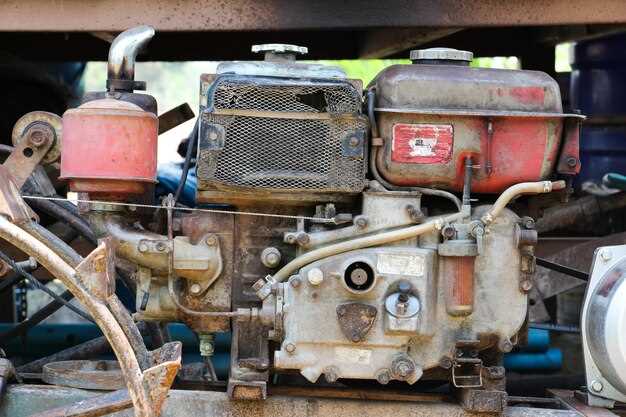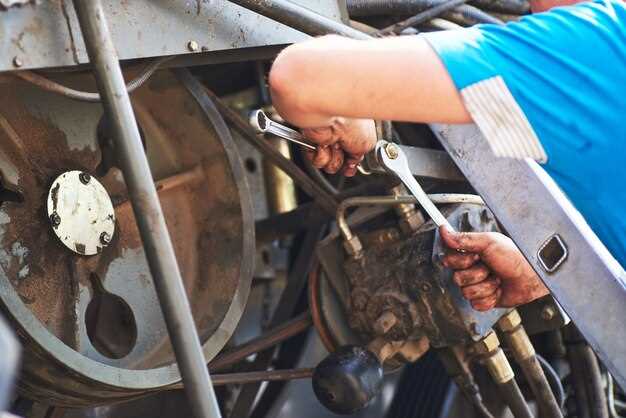
In the world of automotive repairs and upgrades, junkyard engines often emerge as a popular yet controversial option. Many drivers find themselves contemplating the viability of these used power plants, especially when faced with the high costs of new or remanufactured engines. Understanding the reliability of a junkyard engine requires a thorough examination of their testing processes and the key factors that contribute to their longevity.
When considering a junkyard engine, one must acknowledge that not all options are created equal. Engines salvaged from vehicles can undergo various degrees of wear and tear, making it imperative for buyers to assess their condition meticulously. This is where testing becomes crucial. Reliable sources will often conduct comprehensive tests to evaluate the engine’s performance, confirming its functionality before it is resold. Proper testing can make the difference between a cost-effective repair and a regrettable decision.
Ultimately, the decision to opt for a junkyard engine hinges on both the quality of its prior use and the thoroughness of its evaluation. By delving into the specifics of the engine’s history and the reliability of the testing performed, drivers can make informed choices that align with their automotive needs and budget constraints.
Evaluating the Quality of Used Engines from Junkyards
When considering the purchase of a used engine from a junkyard, careful evaluation is vital to ensure reliability. The first step is to assess the engine’s testing history, as many junkyards conduct preliminary inspections and may have documentation available regarding the engine’s performance after removal. These tests often include checks for compression, oil leaks, and overall operational status.
Physical inspection is another critical aspect of evaluation. Buyers should visually examine the engine for signs of wear, rust, or damage. Look for the presence of oil sludge, which can indicate internal issues, and check for any missing or broken components that might affect the engine’s functionality.
Another important factor is the engine’s mileage. Generally, lower mileage engines are preferable as they tend to have less wear. However, it’s essential to balance mileage with the overall condition of the engine. An engine with higher mileage but excellent testing results might still be a better choice than a lower-mileage engine that shows visible signs of neglect.
As part of the evaluation, inquire about the warranty options available on used engines. Many junkyards offer short-term warranties that can provide some assurance regarding the engine’s quality. A warranty indicates confidence in the engine’s condition and performance, which adds another layer of reliability for potential buyers.
Finally, obtaining the engine’s history can provide valuable insights. Information regarding previous usage and maintenance can play a crucial role in determining its condition. An engine that was well-maintained and used in normal driving conditions is likely to be a better investment than one used for harsh applications.
Key Factors to Consider Before Purchasing a Junkyard Engine
When considering a junkyard engine, reliability hinges on several critical factors. First and foremost, the engine’s history is vital. Understanding its past usage can reveal potential issues; engines from vehicles that suffered major accidents may have hidden damage.
Next, thorough testing is essential before finalizing the purchase. Request a compression test to assess the engine’s internal condition. A healthy engine should show balanced compression across all cylinders. Additionally, inspecting for any signs of oil leaks or excessive wear can provide insights into the engine’s overall health.
The mileage of the engine also affects its longevity. Generally, lower mileage suggests less wear. However, high mileage engines that have been rigorously maintained may still be reliable. Documentation of service history can enhance trust in the engine’s condition.
Compatibility with your vehicle is another critical aspect. Ensure that the junkyard engine aligns with your car’s specifications, including engine type, transmission compatibility, and electronic systems. Mismatched components can lead to additional expenses and complications.
Lastly, purchasing from a reputable junkyard can influence the engine’s reliability. Look for yards with warranties or return policies, providing some security against potential defects. Building a rapport with sellers can lead to better deals and transparency about the engine’s condition.
How to Test and Install a Junkyard Engine Safely

When considering a used engine from a junkyard, thorough testing and safe installation are crucial to ensure reliability and performance. Here are steps to help you through the process:
Testing the Junkyard Engine
- Visual Inspection: Start with a thorough visual examination. Check for oil leaks, cracks, or signs of rust. Ensure that all parts are intact and that there are no mechanical damages.
- Compression Test: Perform a compression test to assess the engine’s internal condition. A healthy engine will have uniform compression across all cylinders, typically between 120–200 psi.
- Oil Quality Check: Examine the oil dipstick. Clean, amber oil indicates good maintenance, while dark, sludge-like oil may suggest neglect. If the oil is milky, it could indicate coolant intrusion.
- Listen for Noises: Crank the engine briefly while it’s mounted. Listen for unusual noises such as knocking or ticking, which could indicate serious issues.
- Check for Operational Components: Ensure that critical components like the alternator, starter, and fuel pump are operational or can be tested.
Preparing for Installation

- Gather Tools and Equipment: Prior to installation, collect necessary tools such as wrenches, sockets, a hoist, and any gasket kits needed for sealing.
- Engine Mounts and Adapters: Ensure that you have the correct engine mounts and any necessary adapters to fit the used engine into your vehicle properly.
- Review the Vehicle Manual: Familiarize yourself with your vehicle’s specifications to understand which components you may need to replace when installing the new engine.
Installing the Junkyard Engine
- Remove the Old Engine: Safely disconnect all hoses, wiring, and mounts. Carefully lift the old engine out without damaging surrounding components.
- Install the New Engine: With proper alignment, lower the junkyard engine into place. Make sure to secure it with mounts and bolts according to manufacturer specifications.
- Reconnect Components: Attach all hoses, wiring, and exhaust systems. Ensure every connection is tight and correctly positioned to prevent leaks.
- Fill Fluids: Fill the new engine with fresh oil and other necessary fluids, like coolant and transmission fluid, as per the vehicle’s requirements.
- Test the Installation: Before taking the vehicle on the road, perform a test run. Look for leaks and listen for any irregular sounds, ensuring that everything functions smoothly.
By following these steps, you can effectively test and install a junkyard engine while prioritizing both safety and performance.
